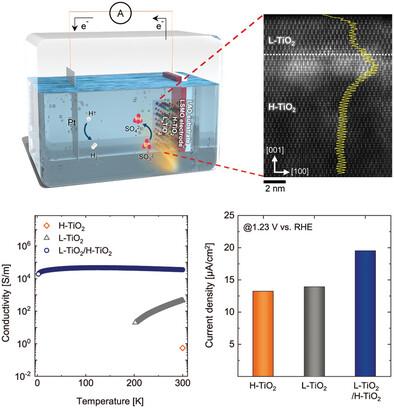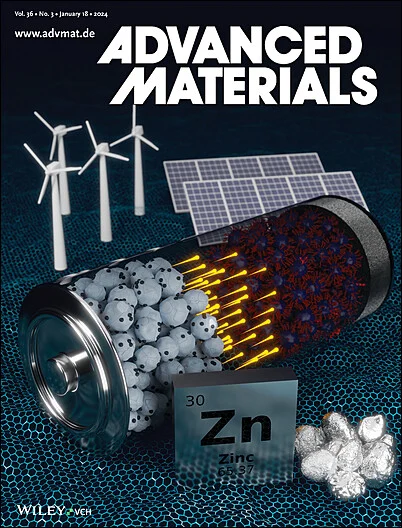增强光催化活性的扁钛矿二氧化钛中的二维空位约束
IF 27.4
1区 材料科学
Q1 CHEMISTRY, MULTIDISCIPLINARY
引用次数: 0
摘要
本文章由计算机程序翻译,如有差异,请以英文原文为准。

2D Vacancy Confinement in Anatase TiO2 for Enhanced Photocatalytic Activities
Light-driven energy conversion devices call for the atomic-level manipulation of defects associated with electronic states in solids. However, previous approaches to produce oxygen vacancy (VO) as a source of sub-bandgap energy levels have hampered the precise control of the distribution and concentration of VO. Here, a new strategy to spatially confine VO at the homo-interfaces is demonstrated by exploiting the sequential growth of anatase TiO2 under dissimilar thermodynamic conditions. Remarkably, metallic behavior with high carrier density and electron mobility is observed after sequential growth of the TiO2 films under low pressure and temperature (L-TiO2) on top of high-quality anatase TiO2 epitaxial films (H-TiO2), despite the insulating properties of L-TiO2 and H-TiO2 single layers. Multiple characterizations elucidate that the VO layer is geometrically confined within 4 unit cells at the interface, along with low-temperature crystallization of upper L-TiO2 films; this 2D VO layer is responsible for the formation of in-gap states, promoting photocarrier lifetime (≈300%) and light absorption. These results suggest a synthetic strategy to locally confine functional defects and emphasize how sub-bandgap energy levels in the confined imperfections influence the kinetics of light-driven catalytic reactions.
求助全文
通过发布文献求助,成功后即可免费获取论文全文。
去求助
来源期刊

Advanced Materials
工程技术-材料科学:综合
CiteScore
43.00
自引率
4.10%
发文量
2182
审稿时长
2 months
期刊介绍:
Advanced Materials, one of the world's most prestigious journals and the foundation of the Advanced portfolio, is the home of choice for best-in-class materials science for more than 30 years. Following this fast-growing and interdisciplinary field, we are considering and publishing the most important discoveries on any and all materials from materials scientists, chemists, physicists, engineers as well as health and life scientists and bringing you the latest results and trends in modern materials-related research every week.
 求助内容:
求助内容: 应助结果提醒方式:
应助结果提醒方式:


